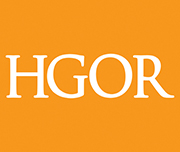Creating Urban Spaces on Rooftops
At the beloved Zoo Atlanta, in the heart of historic Grant Park, we are returning 2.5 acres of green space back to the park. The added green space will also feature a 4,000-square-foot restaurant with partial proceeds going back into the park. So how can we fit a 2.5-acre park, 1,000 cars and a restaurant into a park where space is already at a premium? By creating an innovative parking deck that forgoes a traditional top-floor parking garage in lieu of an urban oasis.
Like Buckhead’s Spanx Headquarters, the $48 million Grant Park Parking Garage is one example of a green roof, roughly defined as “a rooftop that features a vegetative layer.” Green roofs are becoming increasingly popular for their environmental stewardship, sustainability, cost efficiency and aesthetics.
Traditional roofs are typically designed to shed rain, resulting in rain collecting as runoff and picking up impurities on the way to municipal storm sewers, which eventually empty out into local bodies of water. Green roofs, however, delay discharge of rainwater to the sewage system, purify water and help to reduce risk of flooding. Green roofs also reduce buildings’ indoor temperature because less heat flows through the roof and into the building. One study from Florida, published by the EPA, found the average temperature of a green roof was 86 degrees, while a nearby traditional roof was 137 degrees. This results in energy savings for the building itself and an overall climate impact in the vicinity of the building. Green roofs also have a longer lifespan than a traditional roof, provide an extra amenity space for tenants and residents, and purify the surrounding air. And, of course, a green roof is much more aesthetically pleasing to look at than a standard parking garage. Green roofs aren’t limited to a corporate hang out spot, like at Spanx, or a public park, such as Grant Park. Green roofs can also be used for:
Agricultural growing
Purely for stormwater management
An amusement park, like Ponce City Market
Recreational space, such as the highly acclaimed Soccer in the Streets program at select Marta stations
Despite the overwhelming number of benefits, unfortunately, developers are still hesitant of green roofs because their initial cost is more than a traditional roof, despite costs being recuperated early on. Cities are taking major steps to incentive developers and designers to prioritize green roofs. Cities are implementing tax incentive programs, grant programs, density and zoning bonuses, fee reductions and expedited permitting to encourage building these sustainable amenities.
As these roofs gain popularity with residents and more subsidies are made available, we expect to see a surge in these roofs in coming years. It’s a design trend we’re thrilled about. Green roofs are right in alignment with our SEE philosophy. These roofs create social spaces, provide a clear ROI for our clients and prioritize sustainability for our future generations. According to the EPA, in cities where space is at a premium, green roofs can provide the same quality of life for residents and visitors as the high profile, large funded projects, like the Atlanta BeltLine and Piedmont Park. We’re proud to be on the forefront of the green roofs trend and are looking forward to incorporating them in upcoming projects.
Blog by Jennifer Teasley, Project Manager
